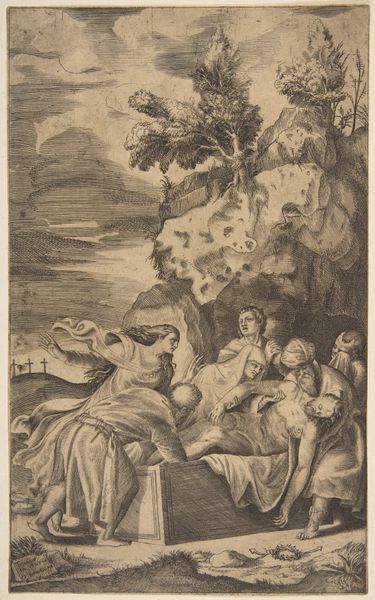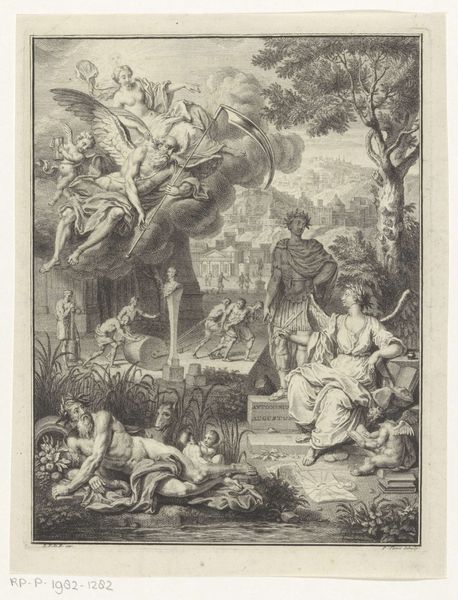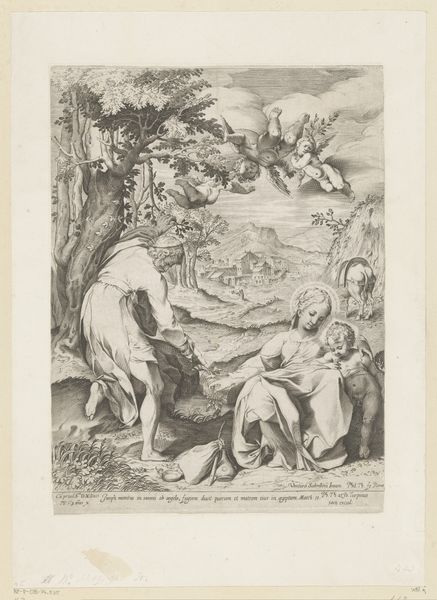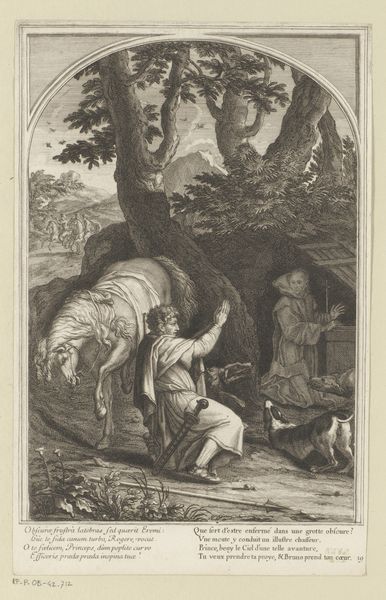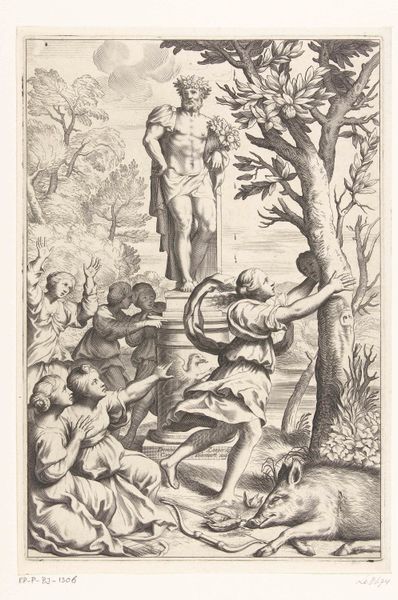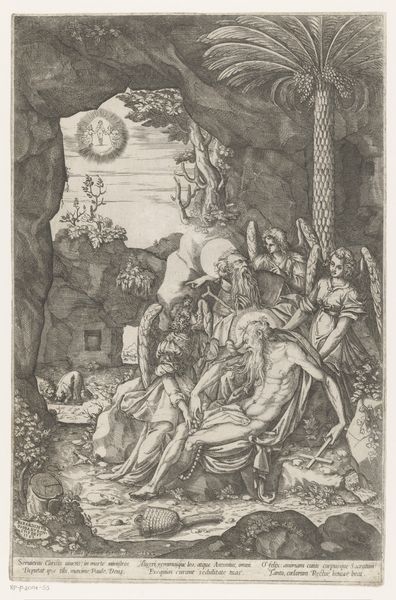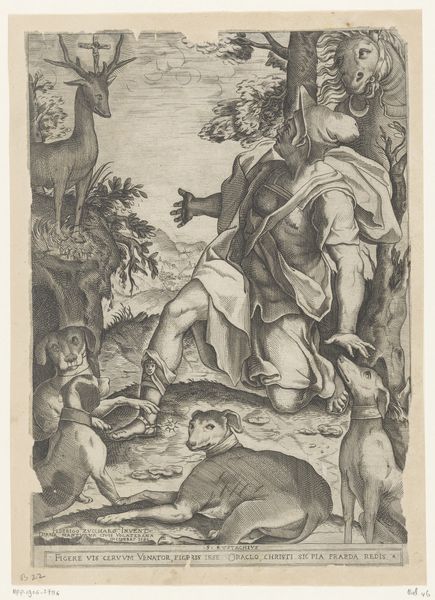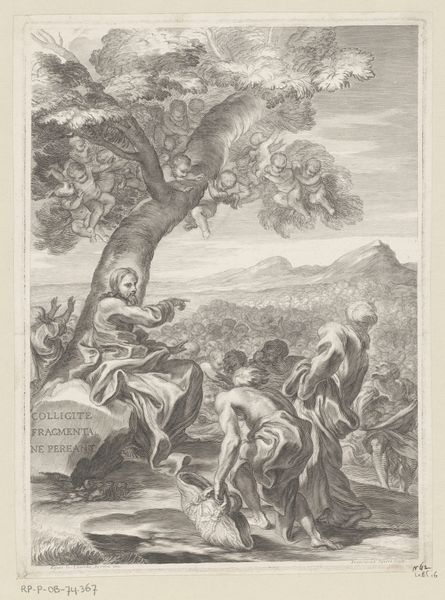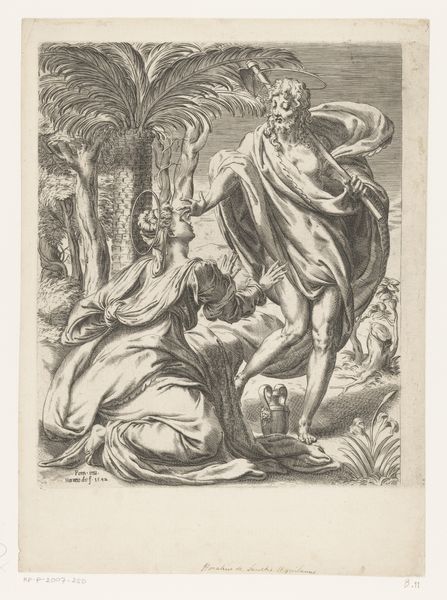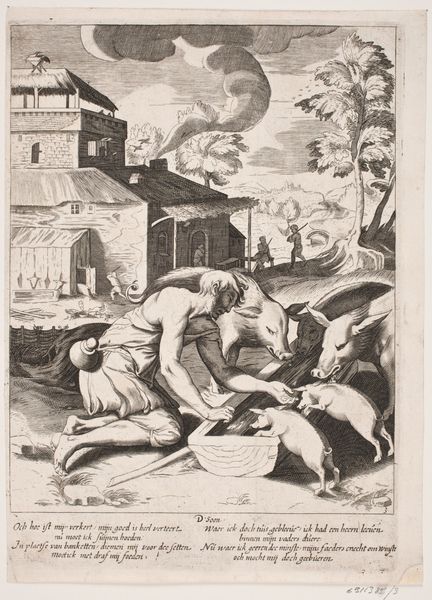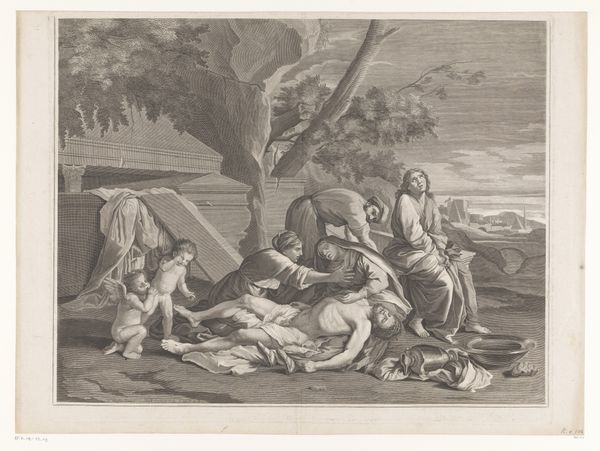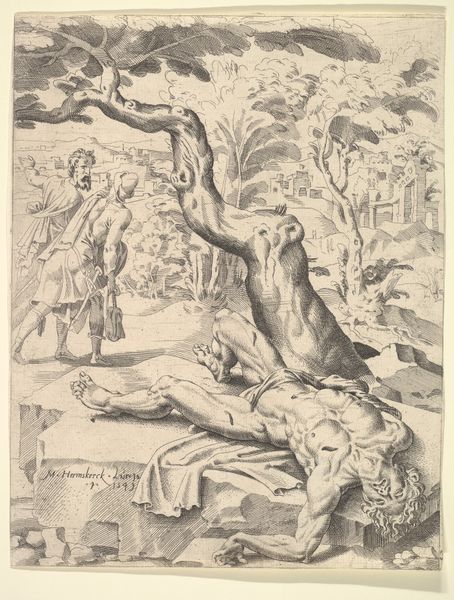
engraving
#
allegory
#
baroque
#
old engraving style
#
landscape
#
figuration
#
history-painting
#
engraving
Dimensions: height 239 mm, width 192 mm
Copyright: Rijks Museum: Open Domain
Curator: Ah, this engraving, "Triomf van Venus met Polyphemus aan de oever," attributed to Jaspar de Isaac and created sometime between 1564 and 1654. The piece exemplifies Baroque style through allegorical representation and a classical theme. Editor: My initial feeling is one of fragmented yearning, of a stark visual dichotomy – Venus in her radiant otherworldliness contrasted by this, frankly, massive and somewhat sorrowful Polyphemus on the shore. Curator: Exactly! The composition plays on contrast. The engraver leverages the medium to create dynamic interplay of light and shadow, emphasizing both figures. Consider the strategic use of hatching to render depth and texture. It isn't just depicting the scene; it's constructing meaning. Editor: You can see the mark-making – how the engraver’s labor built this composition, and the sheer repetition inherent in creating such details as Venus’ billowing shawl or the wave textures. Did he use particular tools, methods of distribution, and how would that inform audience engagement? That's what compels me. Curator: Contextually, engraving was crucial for disseminating artistic ideas. The image as emblem or visual concept held power. The lines become language through repeated symbols and styles that translate meaning of beauty, ugliness and perhaps a failed love. Editor: The narrative of making really draws me in. We see how printing became a major industrial enterprise and engravings enabled broader distribution, making accessible mythology more broadly to audiences in expanding economic markets. Curator: Ultimately, this print speaks to enduring ideas of beauty, desire, and transformation across contexts, framed by rigorous classical training. Editor: For me, it sparks curiosity about artistic and material reproduction itself, unveiling layers of labor involved to reproduce this single sheet that tells us something new each time we look closely.
Comments
No comments
Be the first to comment and join the conversation on the ultimate creative platform.
